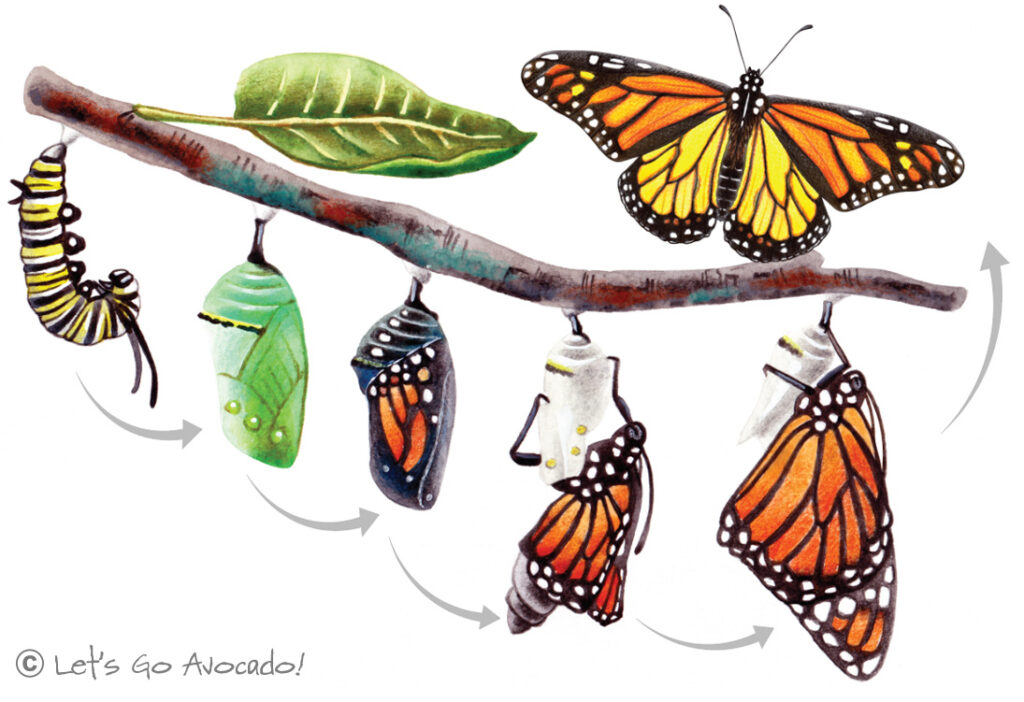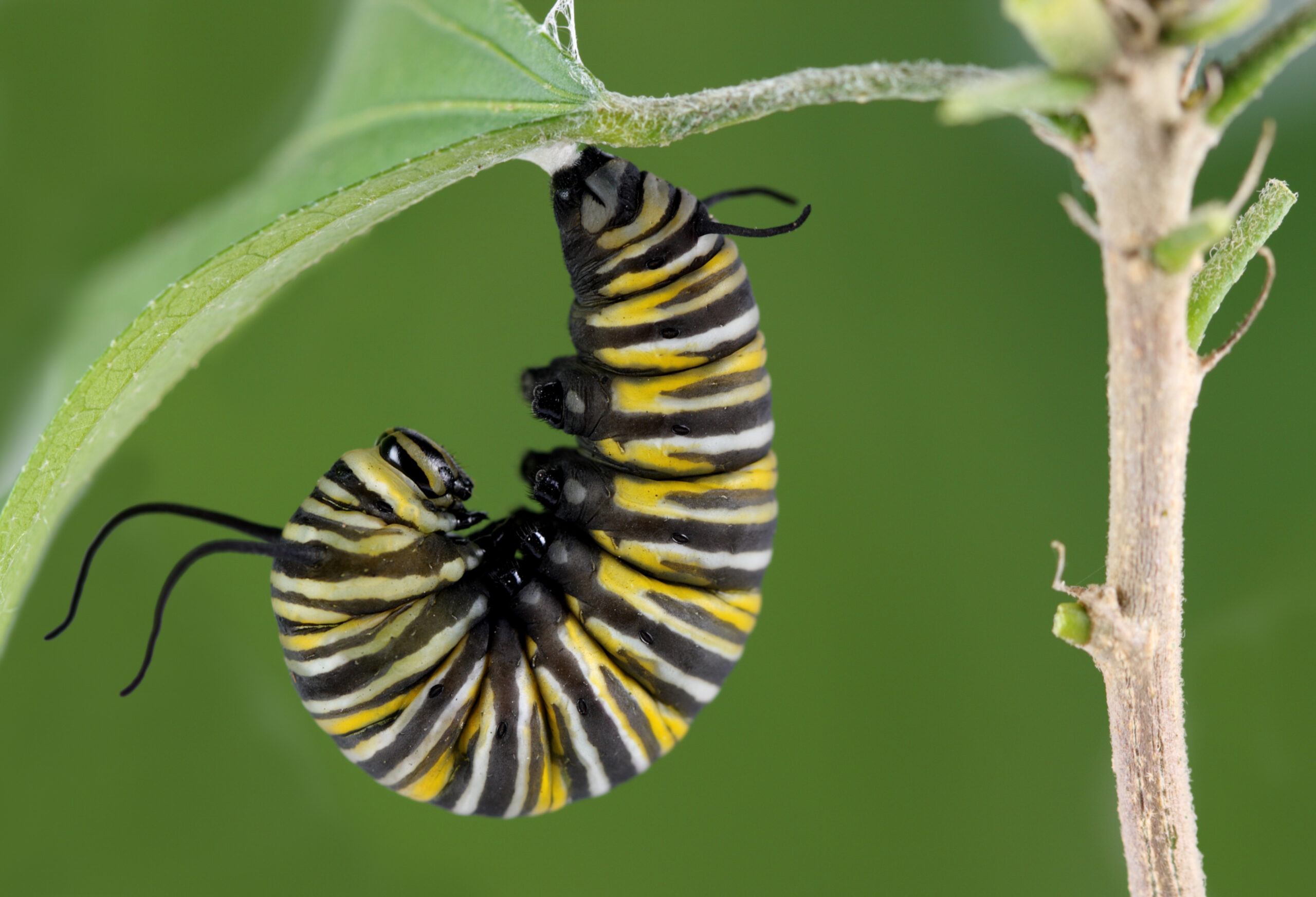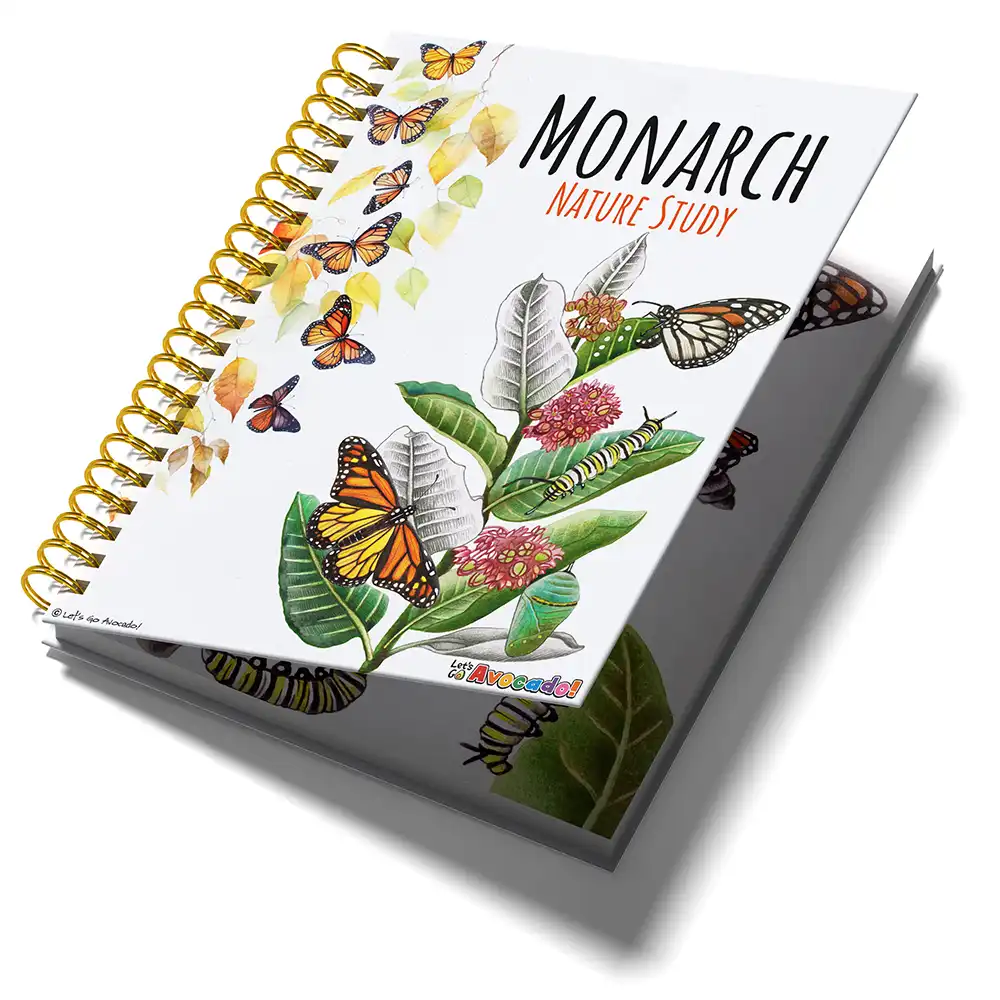This page may contain affiliate links.
Read our disclosure and privacy policy here.
The transformation of a humble monarch caterpillar into a splendid monarch butterfly is an incredible feat of nature. Let’s take a closer look at this astonishing transformation so that we can better understand what exactly is going on inside that chrysalis, where the caterpillar is being transformed into a butterfly.
Table of Contents
The Amazing Metamorphosis Of A Monarch Caterpillar

The Chrysalis: A Hidden Transformation
When a monarch caterpillar is ready to become a butterfly, it sheds its skin one last time. Underneath this skin is the chrysalis, a protective shell where the magic happens. Unlike a moth’s cocoon, which is made from silk and other materials spun by the caterpillar, the chrysalis is part of the monarch’s own body. The chrysalis is green with gold spots and is carefully attached to a leaf or branch. Inside this protective shell, the caterpillar starts its amazing transformation.
Breaking Down: The Process of Histolysis
Inside the chrysalis, the caterpillar’s old body breaks down into a gooey substance. This process, called histolysis, is essential for the transformation. The caterpillar’s muscles, digestive system, and other tissues dissolve, turning into a nutrient-rich soup. This might sound strange, but it’s a critical step. This gooey material will be used to build the new body parts of the butterfly. The transformation is so complete that almost nothing of the original caterpillar remains.
Imaginal Discs: The Blueprint for Change
Within the caterpillar’s body are imaginal discs, tiny structures that have been there since its early days as an egg. These discs contain the genetic instructions for building the butterfly’s adult body. They remain inactive while the caterpillar is growing, but once it forms the chrysalis, these discs spring into action. Each imaginal disc is specialized; some will form the wings, others the legs, antennae, or other parts of the butterfly’s body.
Building the Butterfly: Imaginal Cells at Work
Imaginal discs are made up of special cells called imaginal cells. These cells multiply and organize themselves to form the butterfly’s wings, antennae, legs, and other body parts. They use the gooey material from the dissolved caterpillar to create the new structures. This process is like a construction project, where each cell knows exactly what to do and where to go. Over the days inside the chrysalis, these cells work tirelessly to build the butterfly’s new body, bit by bit.
Creating the Wings: Nature’s Artwork
The wings are one of the most exciting parts of the transformation. Inside the chrysalis, tiny sacs filled with liquid begin to form the butterfly’s wings. These sacs slowly develop into the intricate patterns and veins that will support the wings once they’re ready to unfold. The colors and patterns of the wings are determined by pigments and structural coloration, giving each butterfly its unique appearance. The wings start out soft and folded, but they will soon become strong and colorful.
Emerging: The Big Reveal
After about ten days, the chrysalis becomes transparent. This is a sign that the butterfly is ready to emerge. The chrysalis splits open, and the butterfly comes out. At first, the butterfly is very delicate, with soft wings and a damp body. It’s a bit like a newborn baby, needing time to adjust to the outside world. The butterfly clings to the empty chrysalis or a nearby surface, resting and gaining strength.
Getting Ready to Fly: The Final Steps
After emerging, the butterfly needs to pump fluid from its body into its wings to make them strong. This fluid is called hemolymph, and it helps the wings expand and harden. As the fluid fills the wings, they slowly unfold, revealing the beautiful patterns and colors. The butterfly will also move its wings gently to help them dry. Once the wings are fully extended and dry, the butterfly is ready to take its first flight. This final stage is crucial, as the butterfly needs strong wings to fly, find food, and eventually migrateMigration is the regular movement of animals from one place to another, often to find food or better weather. It’s a seasonal trip that many animals take for survival. Learn More.

There’s a lot to explore right where we are, in our own neighborhoods and backyards! Join us while we get off the couch and explore the everyday wonders of nature, science, space, engineering, art, and anything else we stumble upon during on our adventures.




